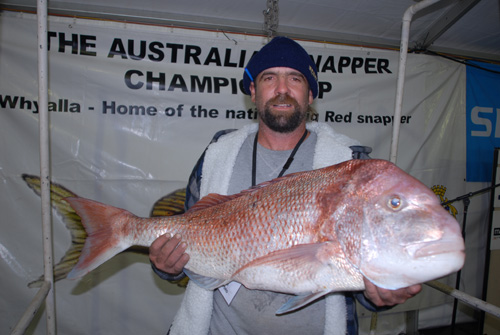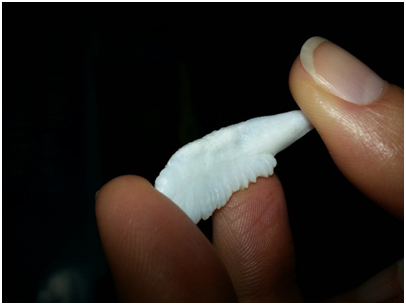Otolith work to assist fisheries management
 The management of commercial fisheries and threatened fish species has received a boost from recent work that further validates the use of naturally-occurring strontium in fish ear bones to track the environmental histories of fish.
The management of commercial fisheries and threatened fish species has received a boost from recent work that further validates the use of naturally-occurring strontium in fish ear bones to track the environmental histories of fish.
Surprising but true: fish have ear bones, also called otoliths. Made from a kind of calcium carbonate called aragonite, these bony structures are used for hearing and balance. We humans have similar structures inside our inner ears that help us to sense gravity and motion.
Trace chemical elements within otoliths are influenced by factors such as water temperature and salinity, and, as otoliths grow incrementally throughout a fish’s lifetime, scientists can use these elements to study the environmental history of fish populations.
Otolith chemistry analysis has a long history, throughout which researchers have studied otoliths in a large number of fish species from diverse aquatic environments. Their findings have provided valuable insights into fish dispersal and migration patterns, changes in fish populations, and how fish use different habitats. Chemistry data can importantly demonstrate that a fish population is made up of distinct sub-populations, with little genetic inter-mixing between them. Such information is important for ensuring the sustainable management of commercial fish stocks as well as the survival of threatened fish species.


Naturally-occurring strontium is a key part of otolith chemistry research because its abundance varies from location to location and it’s easy to detect.
Australian researchers Dr Zoe Doubleday and Associate Professor Hugh Harris and their colleagues from the University of Adelaide used a specialised technique called x-ray absorption spectroscopy (XAS) at the Australian Synchrotron to show that fish ear bones take up strontium in a very specific way. XAS is only available at synchrotrons.
The scientists found the strontium randomly replaces calcium atoms in the carbonate material that makes up the bones. The discovery validates a long-held assumption that has not previously been tested. If the researchers had found that strontium was incorporated by one of the other possible mechanisms, this could have been a significant setback, forcing fish scientists to re-evaluate their earlier interpretations of otolith chemistry data.
The group works with various connections within government agencies, such as SARDI Aquatic Sciences in South Australia, to apply their findings to responsible fisheries management.
Anal. Chem., Strontium Randomly Substituting for Calcium in Fish Otolith Aragonite, 2014, 86 (1), pp 865–869
Image 1: Snapper
Image 2: Cross section of Murray cod otolith, showing annual growth rings. Photo Zoe Doubleday
Image 3: A whole Murray cod otolith. Photo Zoe Doubleday
